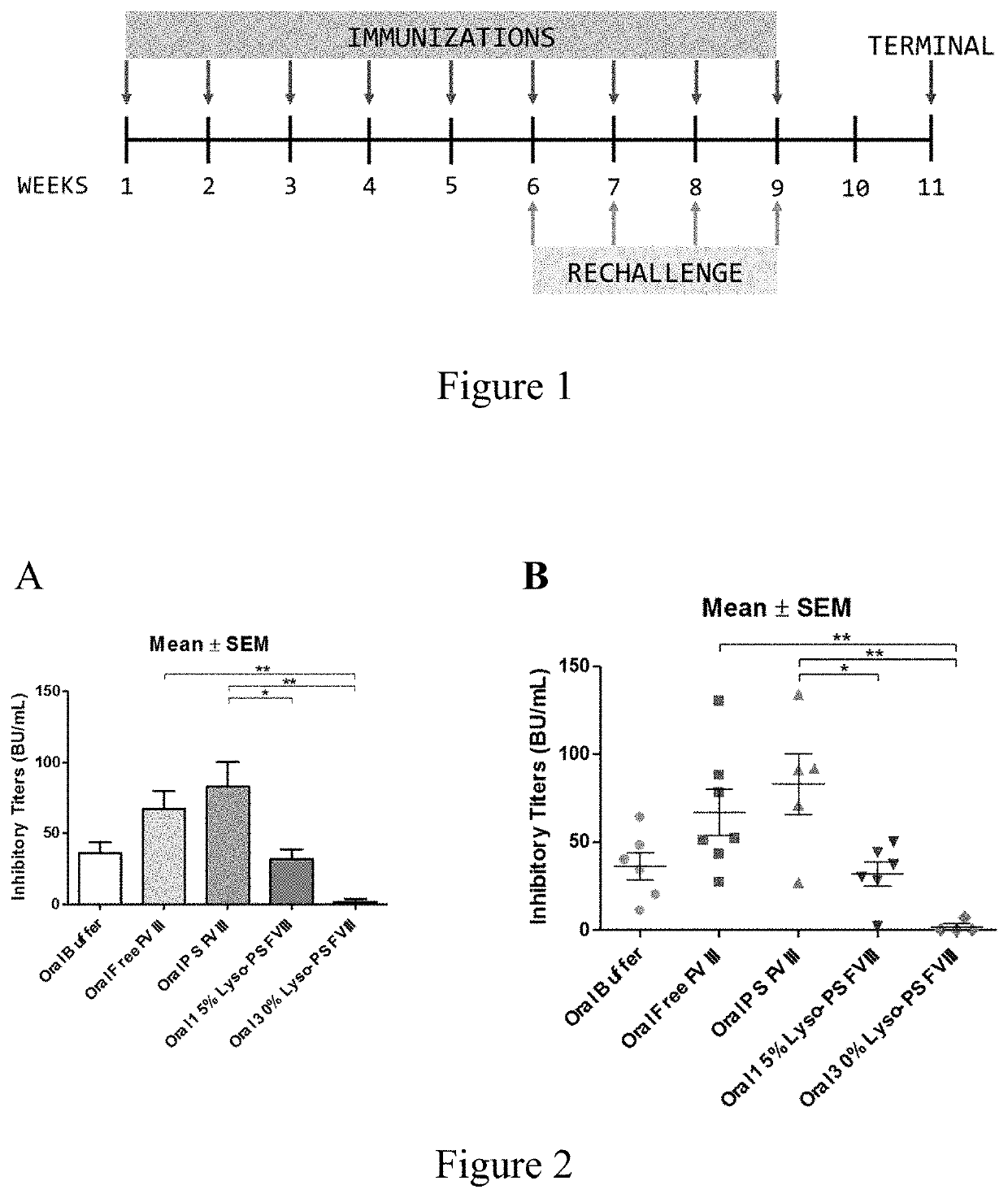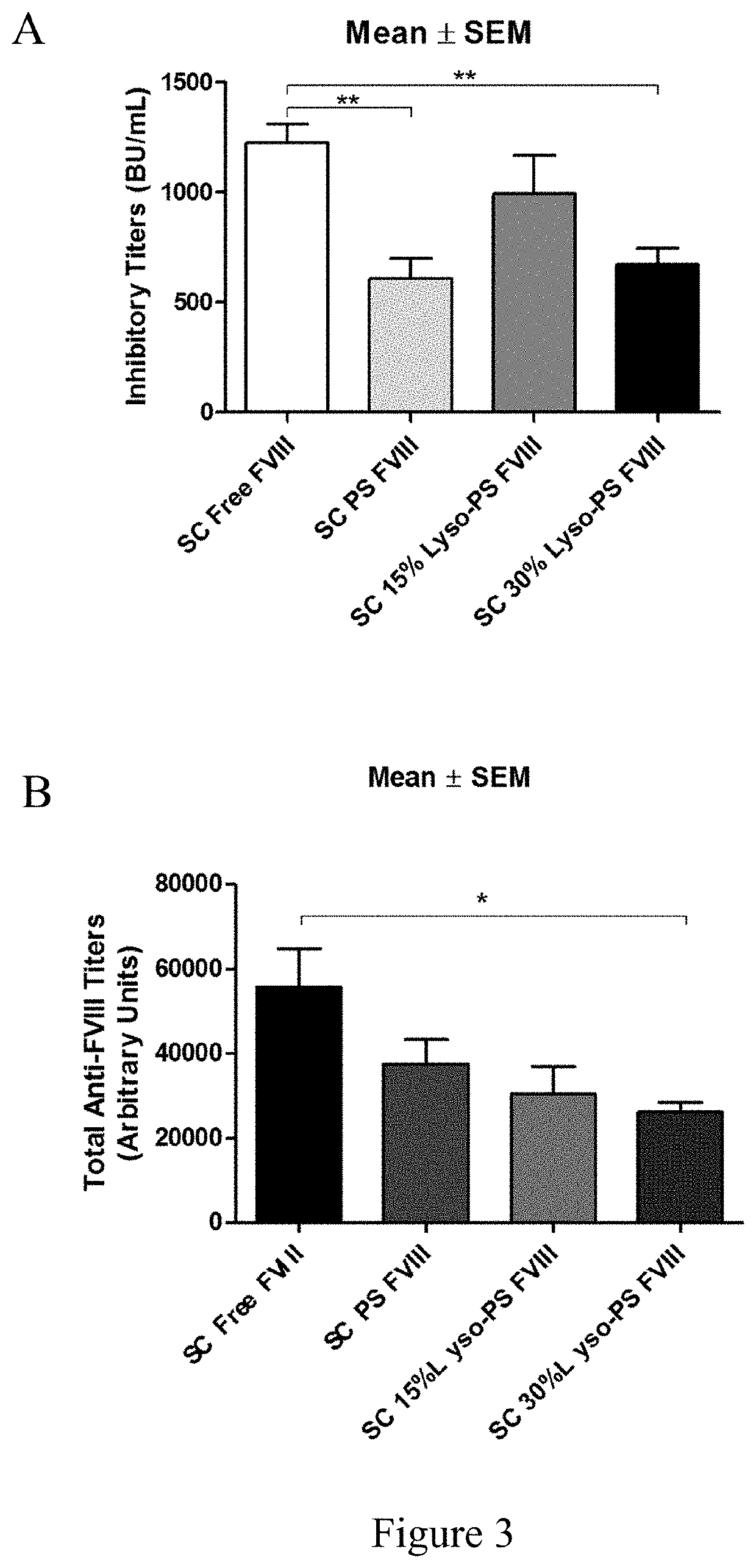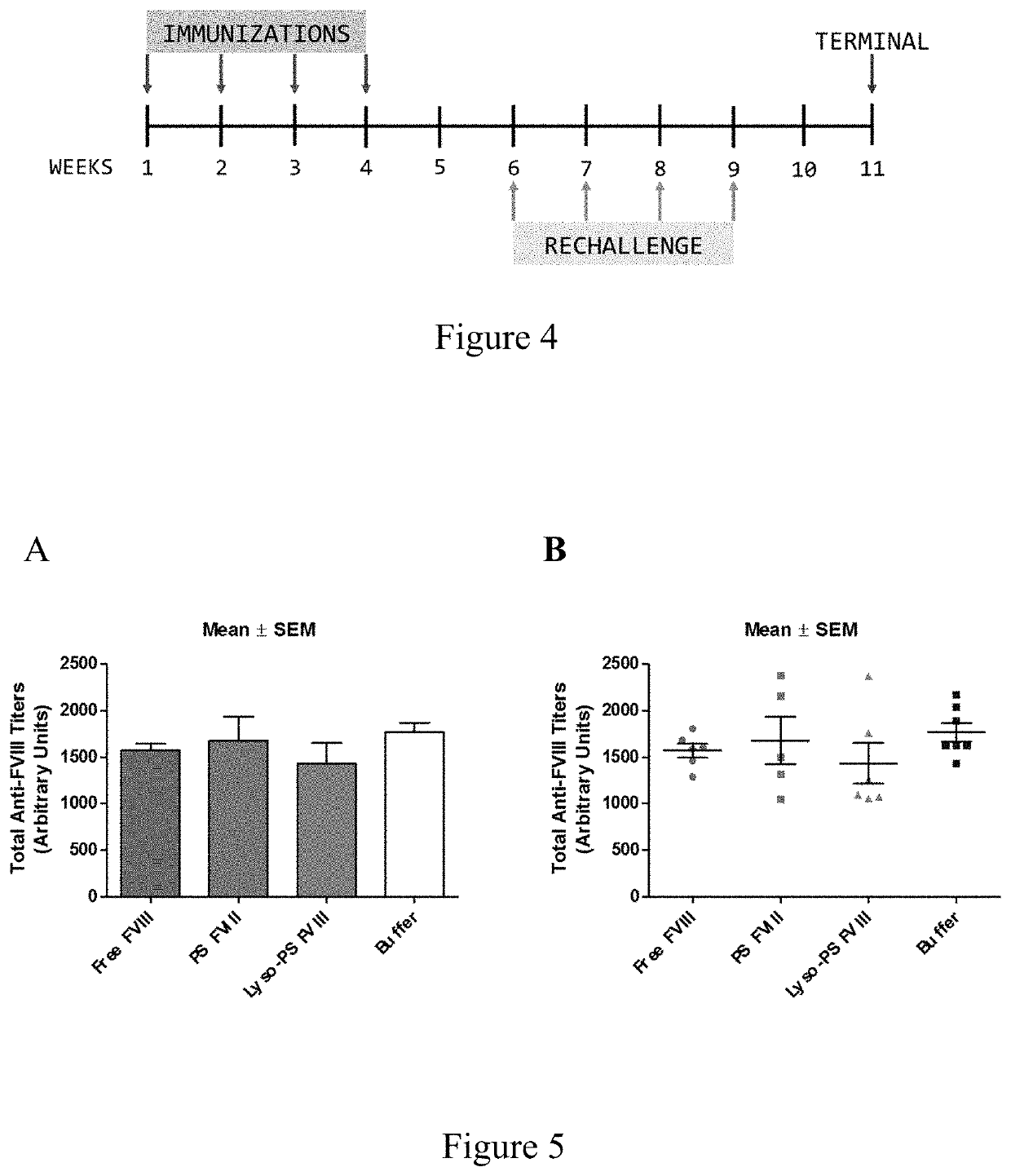Phosphoserine containing compositions for immune tolerance induction
a composition and phosphoserine technology, applied in the field of phosphoserine containing compositions for immune tolerance induction, can solve the problems of food allergies, limitations in each approach, and unwanted immune response against therapeutic proteins and self-antigens, and achieve the effect of reducing existing antibody titers and pronounced
- Summary
- Abstract
- Description
- Claims
- Application Information
AI Technical Summary
Benefits of technology
Problems solved by technology
Method used
Image
Examples
example 1
[0078]This example describes PS containing liposomes with phosphatidyl ethanolamine. PS / PC liposomes reduce immunogenicity of therapeutic proteins as the result of PS group's exposure on the outside. In this study, PE is incorporated in the liposomes' formulation to determine if it increases the exposure of PS.
[0079]PC and PE have a net neutral charge in their head groups while PS has a net negative charge. Therefore, if there is more PS head groups exposing on the outside of the liposomes, their exterior would be more negatively charged. To determine the charge on the surface of PS / PC / PE liposomes, a zeta potential study was conducted. The data shows that the charge on PS / PC / PE liposomes' surface decrease as a function of PE (Table 1).
TABLE 130PS - 70PC -29PS - 68PC -26PS - 62PC -0PE3PE12PEAverage Zeta−17.1−20.4−27.4Potential(mV)
[0080]The table shows that the particles are stable. Exposure of PS in the outer membrane leaflet is important for induction of immune tolerance.
[0081]Sinc...
example 2
[0082]This example provides a description of the methods used in the following examples.
[0083]Methods
[0084]Materials.
[0085]Dimyristoylphosphatidylcholine (DMPC), porcine brain phosphatidylserine (PS), and Lyso-phosphatidylserine (Lyso-PS) were purchased from Avanti Polar Lipids (Alabaster, Ala.). Full length recombinant human factor VIII (FVIII) was a generous gift from the Hemophilia Center of Western New York (Buffalo, N.Y.). Recombinant human acid alpha-glucosidase (rhGAA) was provided by Genzyme Corporation (Cambridge, Mass.). Mouse MOG35-55 was purchased from AnaSpec Inc. (Fremont, Calif.). All solvents and buffer salts as well as incomplete Freund's adjuvant and Mycobacterium tuberculosis H37RA were obtained from Fisher Scientific (Fairlawn, N.J.). Pertussis toxin (PTX) was purchased from List Biological Laboratories Inc. (Campbell, Calif.). Murine TIM-4 antibody was purchased from BioLegend (San Diego, Calif.). Anti-FVIII monoclonal antibody ESH8 was obtained from American Di...
example 3
[0097]This example describes continuous tolerance induction to an antigen. Male and female knockout mice (n=7) were used per group. 0.4 μg of FVIII in TRis buffer (150 mM NaCl, 25 mM TRIS, pH 7.0), endotoxin-free was used. The protein to lipid ratio was 1:10,000. Immunizations were done by oral gavage or subcutaneous route. Rechallenge (meaning administration of a second composition) was done by iv route, 24 hours after immunizations. The various treatment groups were: free FVIII, PS FVIII, 15% lyso-PS FVIII (lyso-PS:PS:PC 15:15:70), 30% lyso-PS FVIII (lyso-PS:PC 30:70). The scheme is shown in FIG. 1.
[0098]The results are shown in FIGS. 2 and 3. FIG. 2 shows oral administration of the first composition, while FIG. 3 shows subcutaneous administration of the first composition. As can be seen from the figures, while both PS and lyso-PS were able to induce tolerance when the compositions were administered via the subcutaneous route (FIG. 3), only lyso-PS was able to induce tolerance via...
PUM
 Login to View More
Login to View More Abstract
Description
Claims
Application Information
 Login to View More
Login to View More - R&D
- Intellectual Property
- Life Sciences
- Materials
- Tech Scout
- Unparalleled Data Quality
- Higher Quality Content
- 60% Fewer Hallucinations
Browse by: Latest US Patents, China's latest patents, Technical Efficacy Thesaurus, Application Domain, Technology Topic, Popular Technical Reports.
© 2025 PatSnap. All rights reserved.Legal|Privacy policy|Modern Slavery Act Transparency Statement|Sitemap|About US| Contact US: help@patsnap.com



